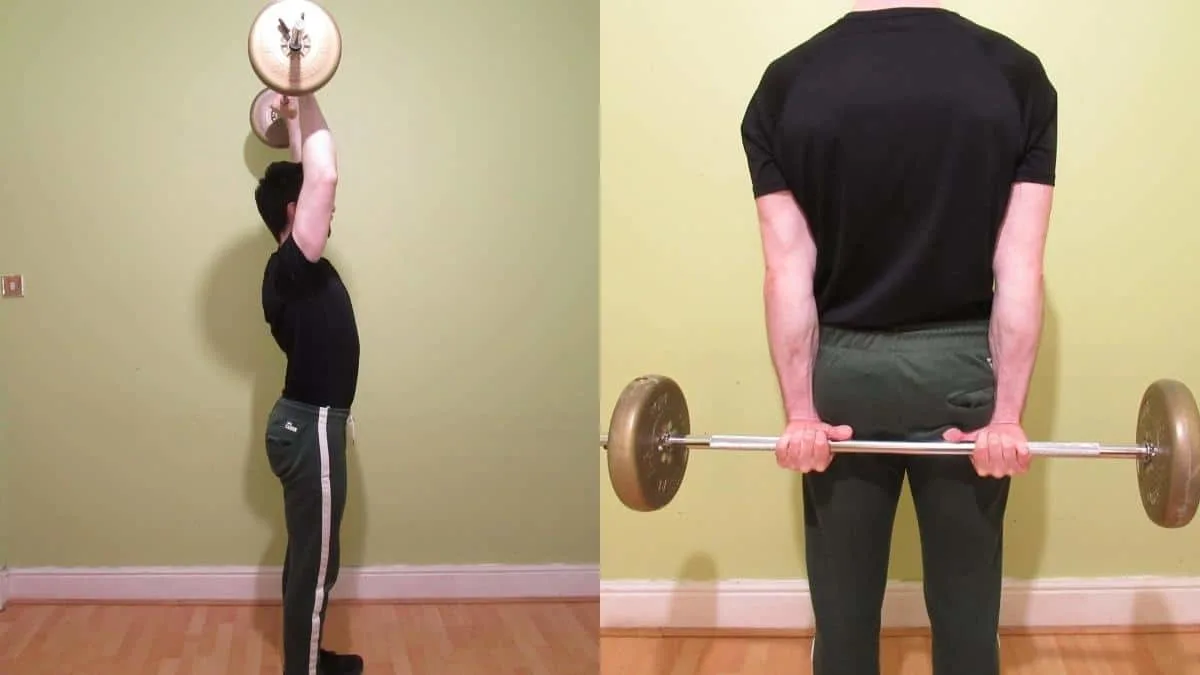The forearm muscles are active in virtually every upper body resistance exercise. Yet, they still remain grossly underdeveloped in many lifters. One reason for this worrying lack of development is that most people don’t prioritize their lower arms within their workout regime.
Usually, they just throw in a few sets of wrist curls after a back or biceps session and call it a day.
However, this is a mistake. If your forearms are genuinely lagging, then you need to train them while they’re fresh so that they can benefit from the heavy mechanical tension. As such, performing a shoulder and forearm workout is an excellent idea if you want to give your lower arms the attention that they deserve.
Related posts: Forearm dumbbell workout │ Shoulder and bicep workout
Shoulder and forearm workout tips
I’ll show you how to workout forearms and shoulders within the same session correctly. Then after these training tips, we’ll get straight into the full workout routines.
Utilize supersets
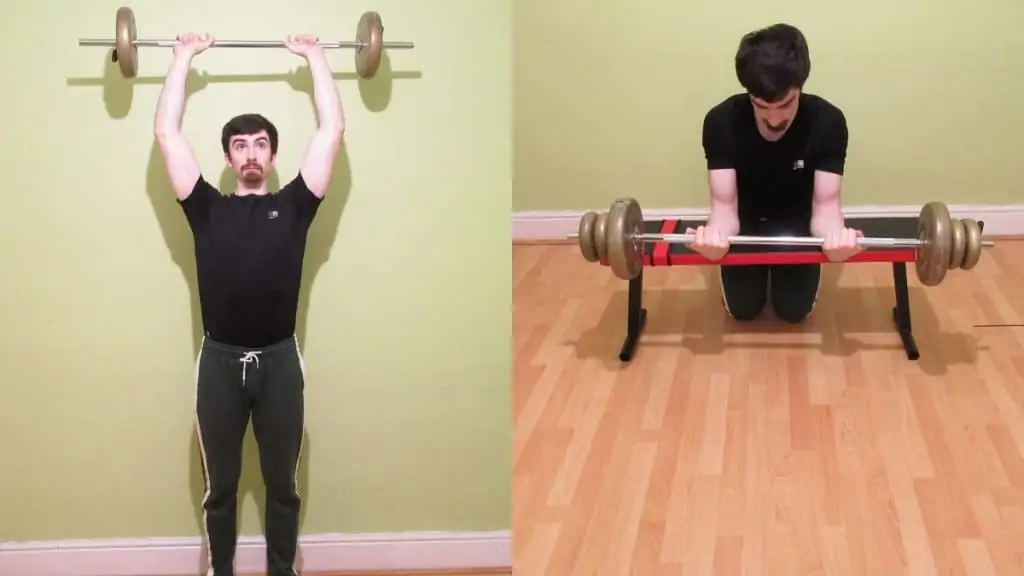
Since the shoulders and forearms have drastically different functions, I encourage highly training them back-to-back. The trick is to do what I like to call a modified superset.
Rather than immediately rushing into a set of standing wrist curls after performing overhead presses, rest 30 seconds to one minute before performing the other half of your superset. This way, the second muscle group will be fresher and able to handle more weight. Plus, you still get most of the training efficiency that paired sets naturally provide.
After completing both halves of the superset, say, standing reverse forearm curls and lateral raises, rest for a full minute.
You might think that performing these paired sets back to back is more beneficial, but that’s just a myth created by pump-obsessed bodybuilders.
And while their line of thought does have some credibility when it comes to supersets for the same muscle group—where you naturally want to maximize the pump—it doesn’t work for paired sets that train different muscle groups because by not resting, you’re weakening yourself and potentially limiting your muscle growth.
Start with compound lifts
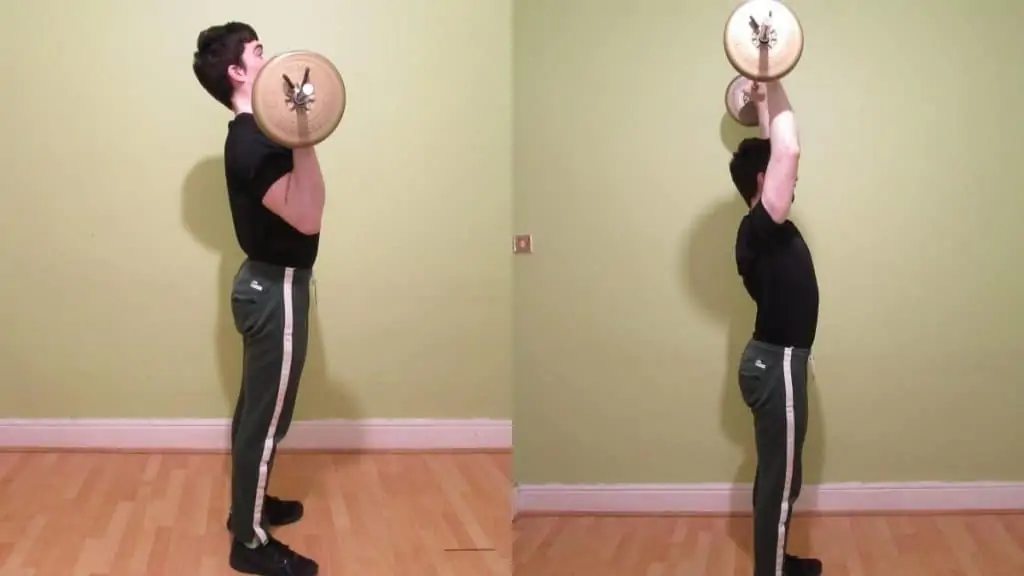
Holding onto a heavy barbell with fatigued forearms is challenging—it feels like you’re clinging onto a cliff edge for dear life.
As such, I recommend starting the workout with heavier, lower rep compound lifts for your shoulders and then moving onto moderate rep plate forearm curls or similar wrist curling exercises.
Save the wrist roller exercise and high rep lateral raises for the end of your shoulder and forearm workout when you really want to burn out the muscles.
Train all parts of your forearm
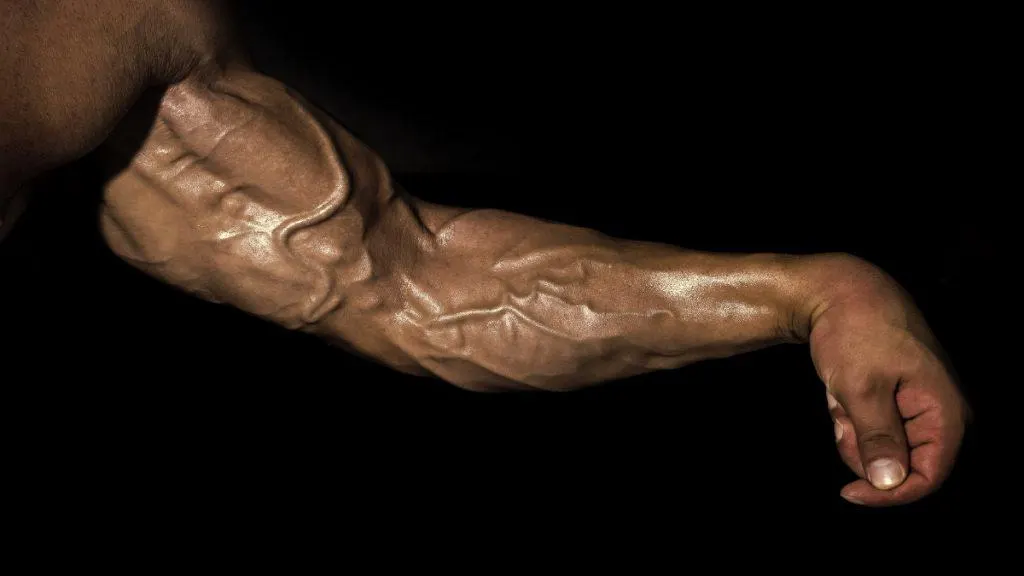
Many lifters already have decent forearm flexors from all of the bicep work that they do. But to get those freaky forearms, you also need to train the extensors and the brachioradialis.
Any kind of reverse wrist curl where you extend your wrist will work your forearm extensors. Just make sure to use high reps because the range of motion (ROM) is tiny on this exercise. If you were to use low reps, you simply wouldn’t get enough time under tension to stimulate new growth.
Do reverse curls and hammer curls for the brachioradialis. Yes, these exercises work the biceps, too, but they’re by far the best two movements for really bringing up this particular muscle.
See Also: Shoulders and triceps workout routine
Don’t underestimate isolation exercises
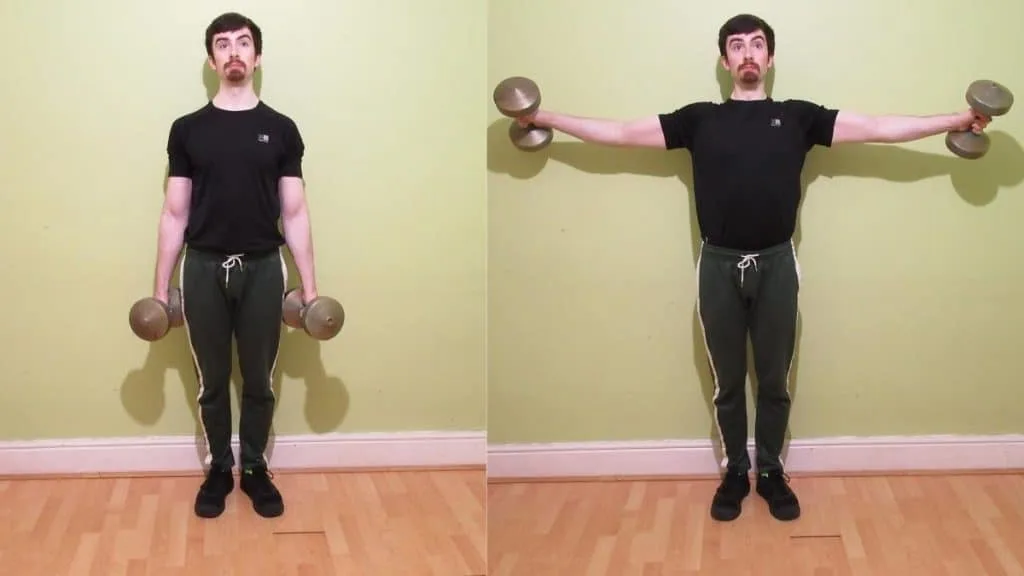
It’s been said many times that muscles only respond to tension. In other words, they can’t tell whether you’re lifting heavy barbells or cute little pink dumbbells.
The awesome benefit of compound lifts is that by adding weight to them over the months and years, you virtually guarantee that the increasing strength is due to your simultaneously increasing muscle mass.
But on isolation exercises, even adding 2lbs to a lift can be challenging. Therefore, you want to focus on perfecting your form on these single-joint exercises so that you can ensure that the target muscle is always the one that receives the most work. [1]
Lateral raises and rear delt flys are particularly effective for building three-dimensional deltoids. This is especially true since many lifters already have well-developed front delts from all of the bench and overhead pressing that they do.
Read more: forearm exercises without weights
Avoid training back or arms the next day
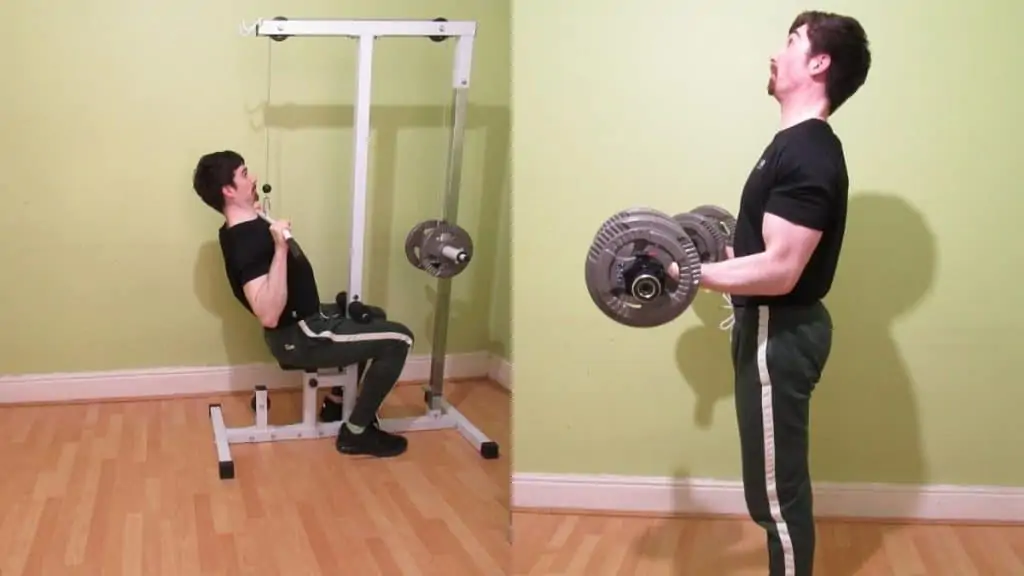
The forearms tend to recover quite quickly if you perform a sensible amount of training volume. (In other words, don’t obliterate them with 30 direct sets for the sake of it).
However, even if you do 4-6 quality sets, they still need time to recover. As such, they’ll be temporarily weaker while they’re on the mend. So try to avoid training back or arms the day after because your forearms might not be able to grip the weights effectively.
Shoulder and forearm workout routines
Each shoulder and forearm workout is targeted towards a different level of advancement. While some people are truly advanced, most lifters generally fall into the intermediate category. Or, if they’re new to the gym or are coming back after a layoff, into the beginner category.
Beginner workout

This workout uses simple straight sets so that you can exert maximum muscle force on each set. The volume (i.e., number of sets) is also moderate because untrained muscles can grow from very little work in the gym.
1: Shoulder press — 3 x 6-8 reps
2: Wrist curl — 3 x 8-12 reps
3: Wide grip upright row — 3 x 10-12 reps
4: Reverse wrist curl — 3 x 15-20 reps
5: Face pull — 3 x 12-15 reps
Intermediate workout
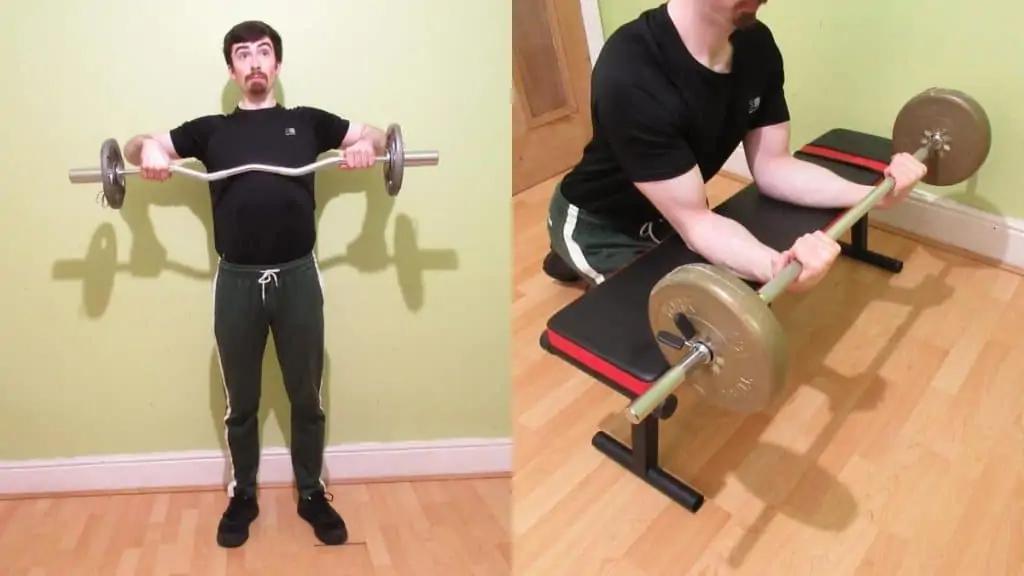
Now we’re moving onto supersets so that we can accumulate plenty of training volume without spending too much time in the gym. Thus, we also avoid creating excessive systemic (whole body) fatigue.
Perform exercise A, rest 30 seconds to 1 minute, and then do exercise B.
1A: Shoulder press — 4 x 6-8 reps
1B: Wrist curl — 4 x 8-12 reps
2A: Wide grip upright row — 4 x 10-12 reps
2B: Reverse curl — 4 x 15-20 reps
3A: Lateral raise — 3 x 15-20 reps
3B: Reverse wrist curl — 3 x 8-12 reps
4: Rear delt fly — 3 x 12-15 reps
Advanced workout
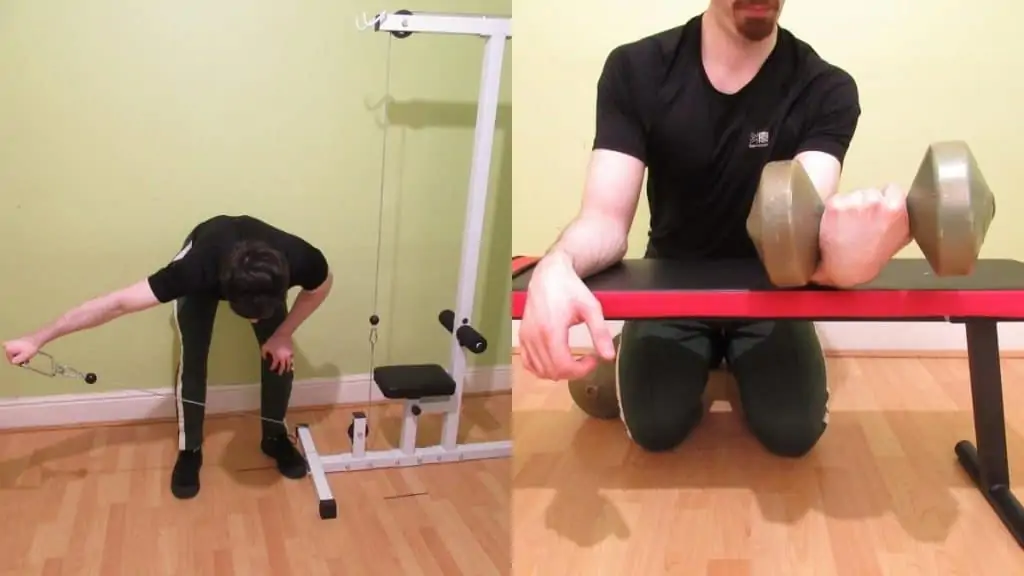
Blast your forearms and shoulders and reach your genetic potential. This hard and intense workout begins with low reps to build mass. Then we trek into the moderate rep range zone to work on overall hypertrophy of the key muscle groups.
We then finish with high reps to ensure that we recruit all of the fast and slow-twitch muscle fibers. And finally, we treat ourselves to a surprisingly tough test of grip strength.
As before, perform exercise A, rest 30 seconds to 1 minute, and then do exercise B. Rest a full minute after doing both the A and B exercises before starting another round.
1A: Overhead press — 5 x 6-8 reps
1B: Standing wrist curl — 5 x 8-12 reps
2A: Upright row — 4 x 10-12 reps
2B: Reverse curl — 4 x 15-20 reps
3A: Lateral raise — 4 x 15-20 reps
3B: Seated reverse wrist curl — 4 x 15-20 reps
4: Rear delt fly — 4 x 12-15 reps
5: Pull up bar hangs — 1 set to failure
Shoulder and forearm workout alternatives
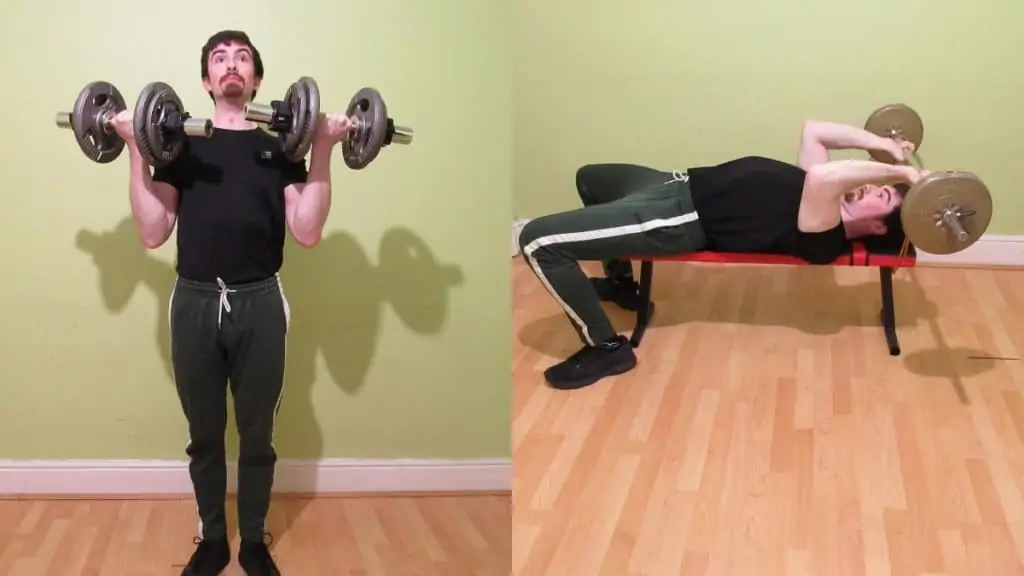
If you’re looking for other workout ideas for your lower arms, then check out these full fitness guides for some inspiration. Each guide has clearly laid out routines and is packed full of training tips and mistakes to avoid so that you always achieve the best results.
- Bicep and forearm workout guide
- Bicep tricep forearm workout
- Body weight forearm exercises
- Forearm exercises for women
- Forearms exercises with a backpack
- Forearm exercises with a kettlebell
- Forearm resistance band exercises
Conclusion: Is training your shoulders and forearms together a good idea?
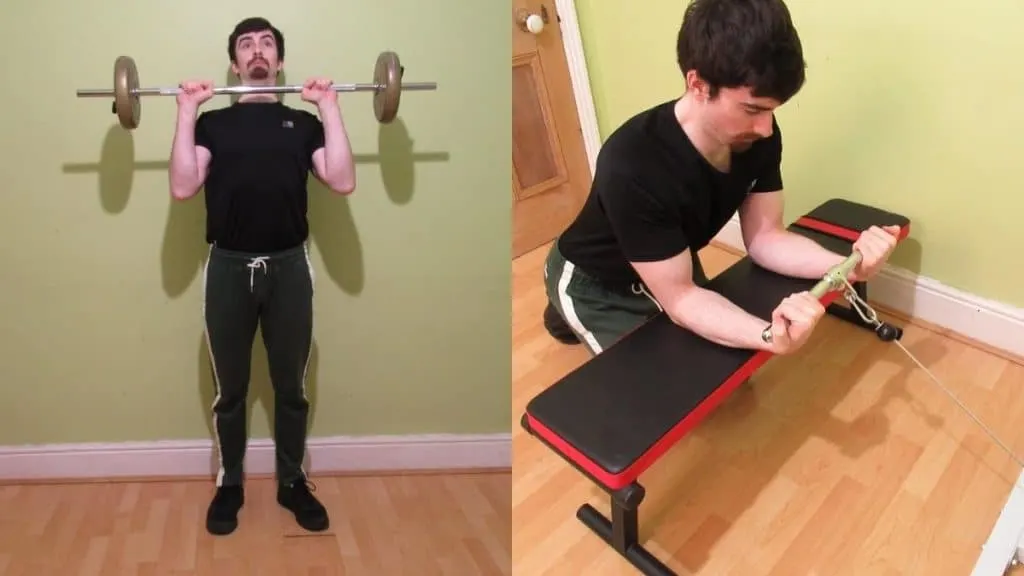
I highly recommend training your deltoids and lower arms together in a shoulder and forearm workout because these two muscle groups and their exercises don’t conflict. [3]
As a result, you’ll have greater efficiency in the gym because you can perform the exercises back-to-back without compromising your strength on subsequent sets.
Just make sure to start with your compound exercises before moving onto the insolation drills.
References
- Escamilla, R. F., Yamashiro, K., Paulos, L., & Andrews, J. R. (2009). Shoulder Muscle Activity and Function in Common Shoulder Rehabilitation Exercises. Sports Medicine, 39(8), 663–685. https://doi.org/10.2165/00007256-200939080-00004
- Scott, W., Stevens, J., & Binder–Macleod, S. A. (2001). Human Skeletal Muscle Fiber Type Classifications. Physical Therapy, 81(11), 1810–1816. https://doi.org/10.1093/ptj/81.11.1810
- Robbins, D. W., Young, W. B., & Behm, D. G. (2010). The Effect of an Upper-Body Agonist-Antagonist Resistance Training Protocol on Volume Load and Efficiency. Journal of Strength and Conditioning Research, 24(10), 2632–2640. https://doi.org/10.1519/jsc.0b013e3181e3826e

